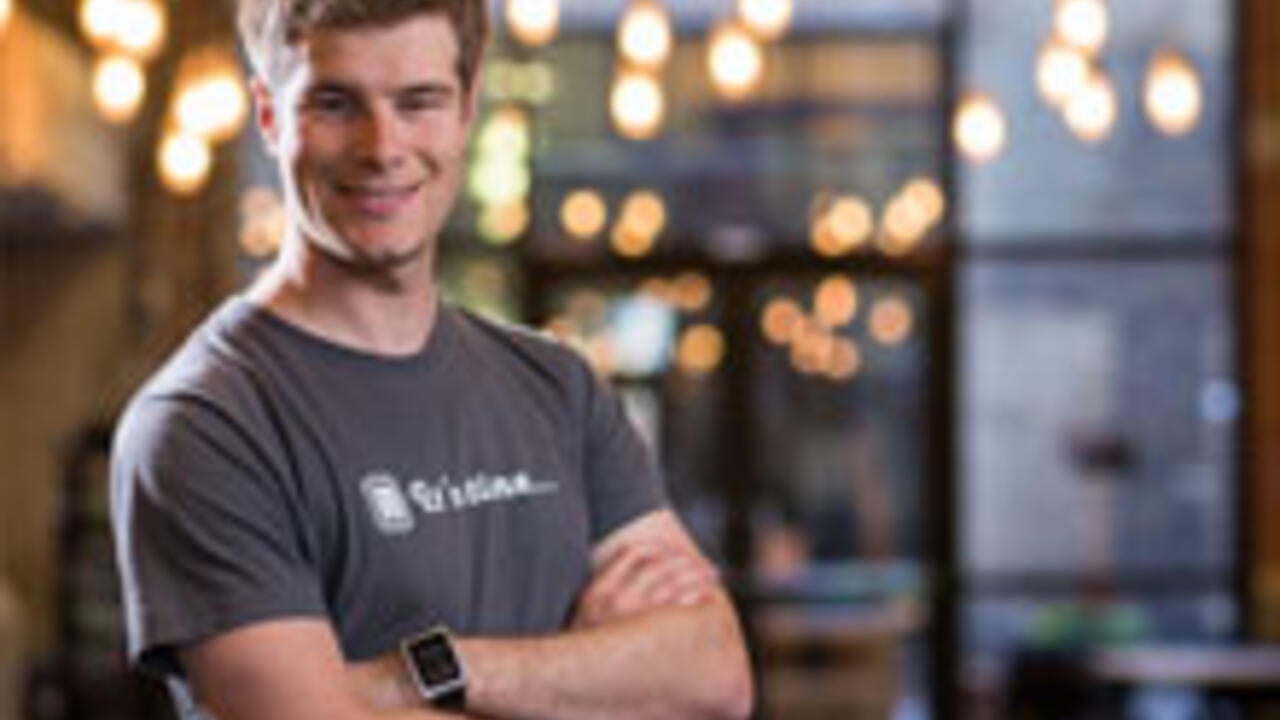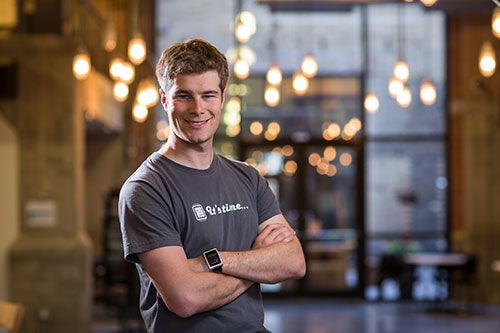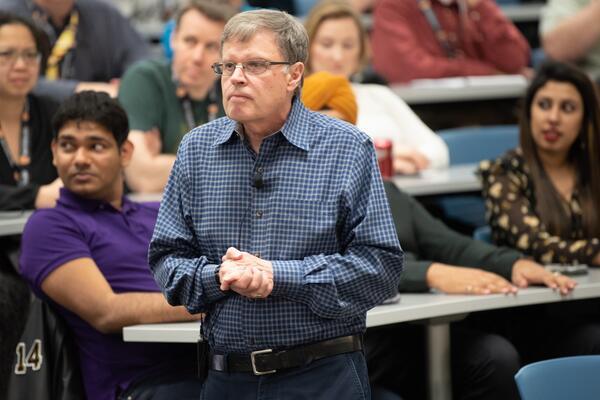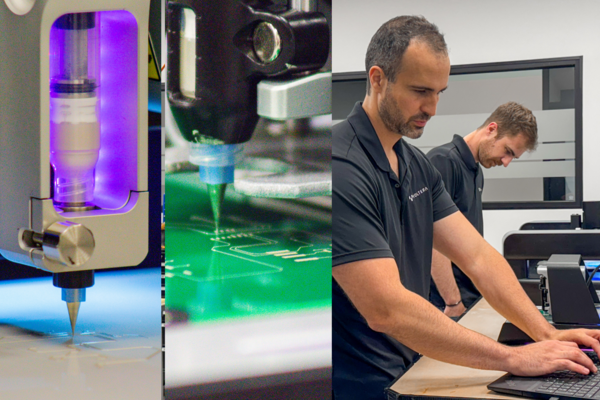
What Pebble’s CEO has to say about the Apple smartwatch
“Turns out the laws of physics still apply at Apple,” says Eric Migicovsky, Waterloo alumnus and smartwatch entrepreneur

“Turns out the laws of physics still apply at Apple,” says Eric Migicovsky, Waterloo alumnus and smartwatch entrepreneur
By Beth Gallagher Marketing and Strategic CommunicationsPebble founder Eric Migicovsky has pitched his smartwatch to dozens of investors. In the startup’s early years, he drove his bicycle up and down a Silicon Valley road famed for its concentration of venture capital firms to sell his vision.
For the first six years of Pebble, it didn’t matter where he stopped along Sand Hill Road - the first question out of every potential investor’s mouth was: “What are you going to do if Apple makes a watch?”
When Apple finally launched its smartwatch last fall, Migicovsky, who started building smartwatches while studying engineering at Waterloo, was relieved.
“It’s counterintuitive but when the Apple Watch was actually launched we were relieved because they were making something that was extremely different from what Pebble was making. It’s not wrong it’s just really different . . . And it turns out the laws of physics still apply at Apple.”
Migicovsky pointed out the Apple Watch, which only works with iPhones, has a battery that only lasts a day and has a dark screen that has to be woken up with a flick of the wrist.
Migicovsky shared stories and lessons at a Velocity lecture on campus called, The Pebble Story: From Velocity to Kickstarter Glory. Migicovsky was among Velocity’s first student entrepreneurs back in 2008, when the campus incubator and accelerator program was beginning.
While Pebble is often seen as the David to Apple’s Goliath in the smartwatch battle, Migicovsky pointed out that the idea of an Apple Watch was always a far more powerful foe than the real one: “When you’re trying to pitch a company against an idea, the idea always wins . . . the hypothetical case is always the most awesome thing in the world.”
The Apple Watch excels at the physical aesthetic, says Migicovsky. Apple has built something that “shows off really well and works with iPhones,” he adds.

“At Pebble we’re doing something a little bit different. We’ve chosen to build the Swatch of smartwatches. It’s fun. It’s affordable. It’s customizable. It reflects who you are and you can make it your own by changing the strap; changing the watch face. It works with the phone you already have and it doesn’t require you to conform around it, it kind of forms around you. It’s water-resistant, it’s durable. It’s just a damn good watch.”
Pebble is Kickstarter King
Migicovsky said raising money was very difficult until he decided to launch a campaign on the crowdfunding site Kickstarter back in 2012. Pebble broke a Kickstarter record by taking just 38 days to reach the $10 million mark. Earlier this year, Pebble launched its second Kickstarter campaign raising more than $20 million from more than 78,000 backers, another Kickstarter record.
Migicovsky, named to Business Insider’s 30 under 30 “Most Influential in Tech” list in 2014, has said that Waterloo’s systems design engineering provided him with the ideal entrepreneurial training. The program offered a mix of courses and a strong emphasis on design along with group projects that mirrored the atmosphere of startups.
During the talk, Migicovsky revealed that his dreams for Pebble won’t end with smartwatches. He said the company is working on the next-generation computing platform; an operating system that ties together wearables. The smartwatch is just the “first thing we have on people’s bodies,” he says.
“The same way that you have operating systems … that work on laptops, those are different than the ones that work on desktops and really different than the ones that work on phones. Pebble is one of the only companies in the world that is building a platform that runs on your body,” says Migicovsky.

Read more
For more than four decades, Waterloo professor Larry Smith has helped build the University's reputation for innovation and entrepreneurial excellence

Read more
Voltera prints electronics making prototyping faster and more affordable — accelerating research to market-ready solutions

Read more
‘I found my people’: Aileen Agada talks enterprise co-op and how it shaped her entrepreneurial success
The University of Waterloo acknowledges that much of our work takes place on the traditional territory of the Neutral, Anishinaabeg, and Haudenosaunee peoples. Our main campus is situated on the Haldimand Tract, the land granted to the Six Nations that includes six miles on each side of the Grand River. Our active work toward reconciliation takes place across our campuses through research, learning, teaching, and community building, and is co-ordinated within the Office of Indigenous Relations.